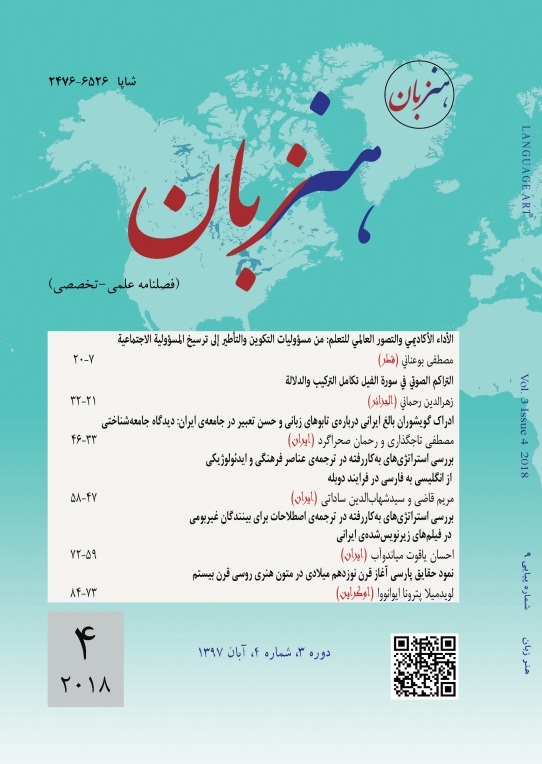Investigation of the Strategies Employed in Translation of Cultural and Ideological Items from English into Farsi in the Process of Dubbing (Based on Sharifi and Darchinyan’s Categorization)
DOI:
https://doi.org/10.22046/LA.2018.22الكلمات المفتاحية:
Audiovisual Translation, Formal Dubbing, Initial Norm, Taboo Terms, Translation Strategy.الملخص
At the age of globalization and the dominance of media, the audiovisual translation is no more considered as a marginal area and plays an important role in bringing cultures closer to each other. While taboo terms are an inseparable part of American movies, the movie maker companies have to reflect the authenticity of their language in audiovisual products in order to make them more tangible for their audiences. However, one of the biggest concerns of Iranian official audiovisual translators is cultural and ideological items such as taboo terms in audiovisual products. One of the aims of the present study was to investigate the strategies applied in the translation of taboo terms in two dubbed American movies by Iranian official audiovisual translators. The results indicated that most of the taboo terms have been altered or deleted ideologically during the process of translation due to the cultural differences between the source and the target culture. Finally, Iranian official audiovisual translators attempted to tone down the strong language, offensive expressions, vulgar descriptions, etc. in the process of dubbing and create an acceptable translation for their audiences.

